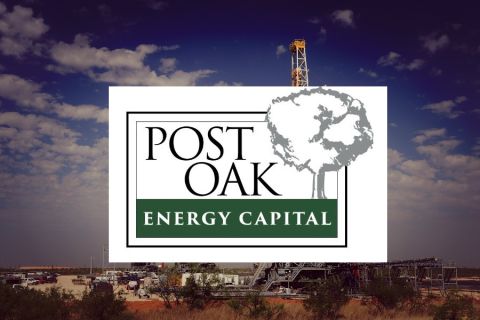Liquidity and transparency may be at critical lows, especially in power markets, but on the whole, energy markets still work. The system may just not be pretty for a while. Still individual companies face difficulties and regulatory systems remain flawed, according to speakers at the recent Rocky Mountain Natural Gas Strategy Conference. "We are in a downpour," said Michael Day, vice president, global analysis, Duke Energy. "But as Mark Twain once said when asked if it will ever stop raining, 'Well, it always does.'" Day said the industry will always need risk-management services to weather this extreme volatility, citing inter-regional supply and demand that are often out of balance. "Somebody needs to provide price risk management." Keith Rattie, president and chief executive officer of Questar Corp., said, "Are markets working? Of course they are. They always have a way of ensuring that supply and demand meet at some price. When Enron collapsed, we lost a company that by some accounts touched one-fourth of all U.S. electricity, but I am not aware of any blackouts or customers who failed to receive power. Capitalism works to ensure the job gets done, even if it is not pretty. The function of trading has to survive." Edward M. Kelly, director of North American natural gas research for Cambridge Energy Research Associates, added, "There is no alternative to gas trading-you have to buy and sell gas at some point and some price. There is no regulated cost-base available because of FERC 636, so there is no alternative to gas trading-somebody has got to do it. "Someone will step into the rubble." Gas trading has in fact become more attractive because there is less liquidity in the market and less competition, Kelly added. Each segment of the gas value chain is becoming more segmented and distinct, with its own skills, technologies and economics. Value is migrating both upstream and closer to the end user, he said. Meanwhile, investor skepticism toward the industry is mounting, which causes resulting capital constraints. The supply gap is getting more pronounced the more forward one looks, so sustaining domestic production after the coming deepwater supplies peak will be difficult. And, prices have reached a multiyear high in volatility, with volatility concentrated in certain supply areas. "When prices peaked, 5- or 6 billion cubic feet of gas a day of demand went away in 2001 and 2002," he said. "Price volatility supports trading margins, but basis volatility will change as we overpipe once again in a three- to five-year overbuild in certain regional markets." The basis differential has widened considerably this year for Rocky Mountain gas, with some producers getting well below $2 per thousand cubic feet for their gas. The Kern River Gas Transmission expansion under way now will fix that problem, but announced plans for other pipeline capacity expansion may overpipe the system once again. Michael Zenker, CERA director of North American energy, added that power markets function well if buyers can find lower prices and better service, enough players provide the necessary transparency and liquidity, and consumers are able to respond to price by altering their buying patterns and select new suppliers. By these definitions, the power markets still function well, he said. One key question seems to be whether regulators will tolerate industry volatility. "Regulators at the state level are growing impatient. The majority we've talked to think competitive markets don't work," Zenker said. "The wholesale price shocks have angered them, so we expect a halt in the march to full retail deregulation for a while. FERC is now one of the sole advocates of deregulation. We are not seeing the same fervor in Washington, now that some of the more aggressive advocates [such as Enron] have fallen by the wayside." Rattie suggested that other players in the industry step up to champion deregulation now that Enron isn't doing so. "It is vital to this country and this industry that we step up and prove [California Governor] Gray Davis wrong when he says deregulation is a dangerous failure." Despite the turmoil that has led many companies to postpone power plant construction, by this time next year about 40% of U.S. power plant capacity will be in the hands of competitive, unregulated, market-based owners. This is a stunning change from a few years ago, when all plants were owned by cost-plus, regulated entities. "U.S. electricity demand grows about 2% per year but in some markets we are building for a 10% increase in capacity, so we are overbuilding for the first time. We don't yet know what the back end of a boom-bust cycle will look like in the independent power production industry. Current margins do not support building new capacity."
Recommended Reading
Weatherford M&A Efforts Focused on Integration, Not Scale
2024-04-25 - Services company Weatherford International executives are focused on making deals that, regardless of size or scale, can be integrated into the business, President and CEO Girish Saligram said.
Range Resources Holds Production Steady in 1Q 2024
2024-04-24 - NGLs are providing a boost for Range Resources as the company waits for natural gas demand to rebound.
Atlas Energy Solutions Declares Dividend
2024-02-09 - Atlas Energy’s dividend represents a 5% increase from the previous quarter’s dividend.
Northern Oil and Gas Ups Dividend 18%, Updates Hedging
2024-02-09 - Northern Oil and Gas, which recently closed acquisitions in the Utica Shale and Delaware Basin, announced a $0.40 per share dividend.
Permian E&P Midway Energy Partners Secures Backing from Post Oak
2024-02-09 - Midway Energy Partners will look to acquire and exploit opportunities in the Permian Basin with backing from Post Oak Energy Capital.





